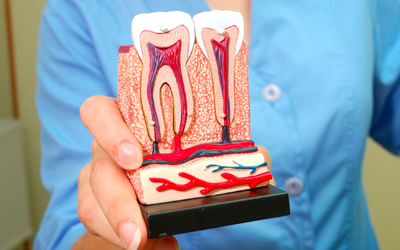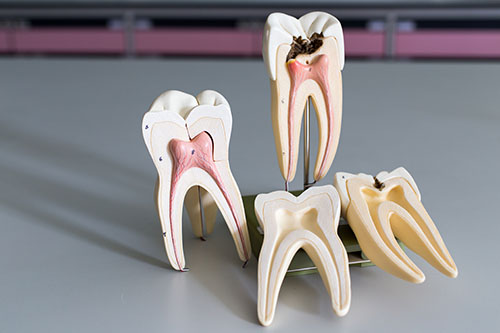Root Canal Procedure: What to expect
During your first visit to assess a toothache, the dentist will take x-rays, and may perform tests to check the health of the painful tooth. If it is deemed that root treatment is a good option for saving the tooth, usually two visits are required- to clean and medicate the tooth so it is soothed; and once healed a second visit to place a final root filling, and external filling (or crown).
If you had a similar infection anywhere in your body, a doctor might prescribe a course of antibiotic tablets; the antibiotics swallowed spread through your bloodstream to the source of the infection, and the bacteria are killed. Unfortunately, teeth are a uniquely shaped part of your body. When the tooth pulp becomes infected, the blood vessels inside die, so no antibiotics flowing in your bloodstream can actually get inside the tooth. So a root canal treatment aims to open up and disinfect the chamber inside the tooth and place antibiotic cream directly where the infection is. The dentist will place a plastic sheet (called a nitrile dam) over the tooth to keep it dry and sterile, like a surgeon’s sterile green drapes. It will allow you to swallow comfortably, and the water spray from the dental drill will not go into your mouth. The dentist will remove any decay as they would with a filling, but where dental drills will not reach deeper in the roots, sterile files will be used to clean and shape the canals. The canals are rinsed with disinfectants, and then antibiotic cream is placed in the empty chamber. The cream should be left to kill the bacteria for about 4 weeks (just like a full course of antibiotics would be taken over a couple of days), during this time a temporary filling is placed.
Root canal treatment must be followed with a root canal sealant. This is a follow up appointment that involves removing the antibiotic cream, drying the now sterile (bacteria and infection-free) canal inside the tooth, and placing a rubber-like or resin based material. This is to create a water-tight and bacteria-proof seal, with the aim of stopping the infection from coming back again. Next, the dentist places a crown or other restoration over the remaining tooth to protect it. Once restored, the tooth continues to function like any other tooth.
















